It is essential to recognize baby cockroaches at an early stage of their life to administer roach infestation and cater to future disturbances.
It happened to a close relative of mine, who lives in Florida; back in July 2018, a batch of Baby roaches managed to grow at the main vent pipe associated with their bathroom and later infested through the commode as the family was away on vacation.
Baby cockroaches look like a mini version of their parent bugs, termed nymphs, & don’t have wings visible early. When hatched, they have a grey or white texture on their bodies and dark dotted eyes. Overall, a jelly-like appearance. The filiform antennas are also white. The color will become darker as they grow but still quite bright than their parents due to excessive refreshing resulting from molting. A newly molted roach is also known as Albino Roach or White Cockroach.
Baby roaches are omnivorous, and they will eat anything organic, ranging from food scraps to paper, garbage, and even hairs. However, they are fond of getting attracted to fermenting & starchy food like sweet potatoes, rice & bakery items.
Getting rid of a baby roach is easier than the adult ones. All you need to do is use an IGR to stop baby roaches to molt into adult roaches. It’s a very effective method of getting rid of baby cockroaches.
Tired of cockroaches? Invest in only these products and follow the guide to eliminate roaches!
Use these products, and you will be roach free in less than a week.
1. Advion Cockroach Gel Bait (Review)
2. Gentrol IGR Point Source (Review)
Other Products to try:
1. Combat Roach Traps (Easy than gel baits)
2. Hot Shot Foggers (To kill in masses – 95%)
3. Pet Safe Killers (Uses Essential Oils)
4. Ortho Defence Outdoor Roach Killer (Prevent Roaches)
Baby Cockroach Pictures
Below are a few baby cockroach pictures that will help identify them more easily. These images also contain pictures of roaches that are fully grown for better comparison.
Sometimes, baby roaches can also be confused with bed bugs. Check this article on bugs that looks like roaches but aren’t.




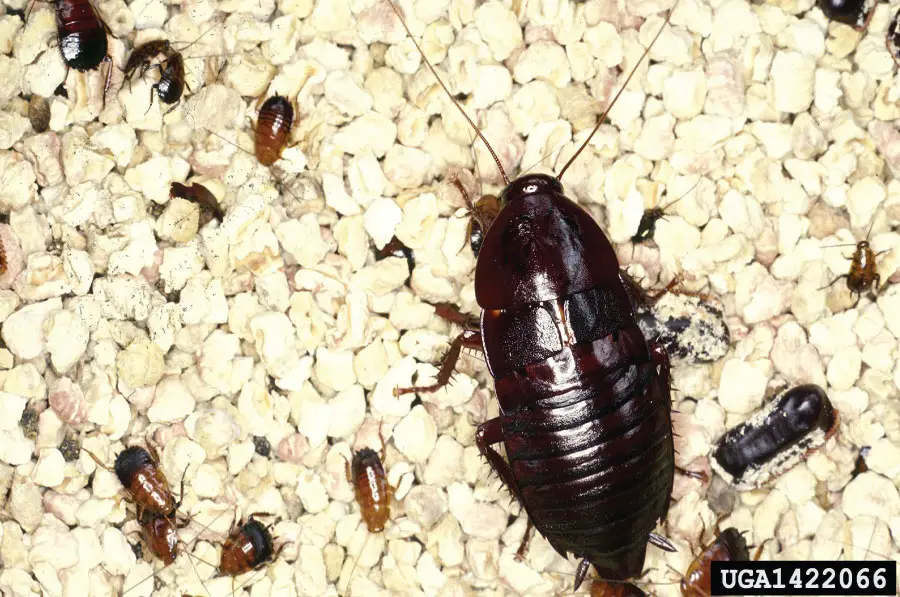

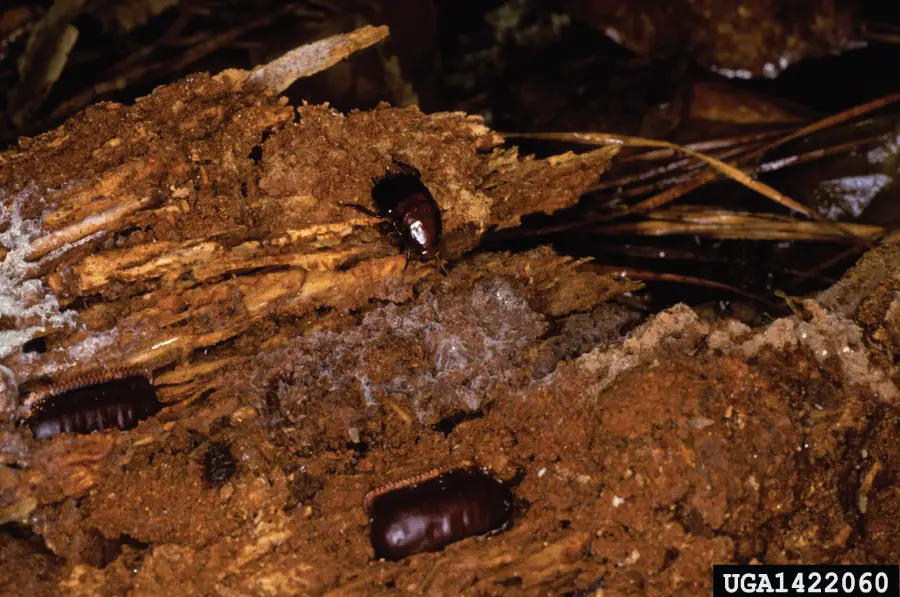

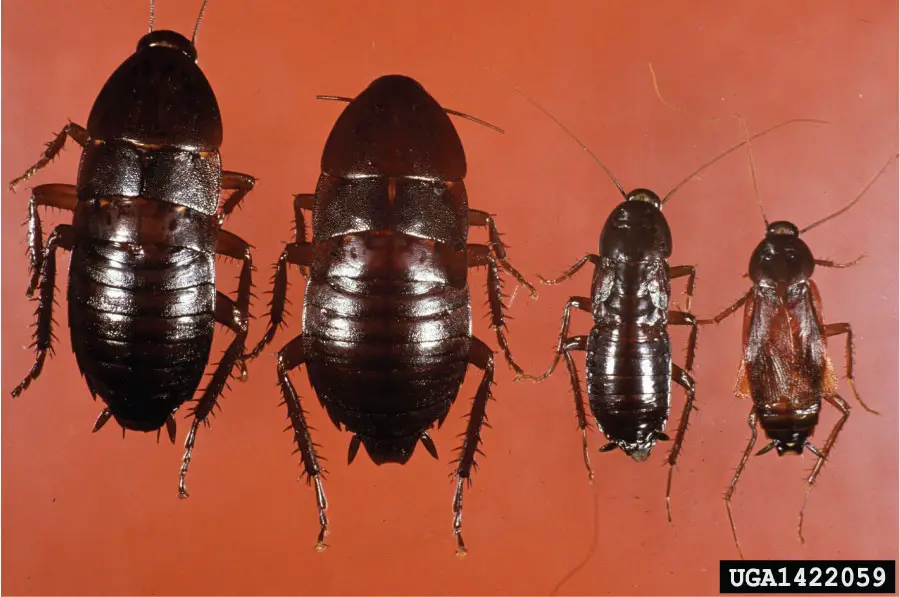

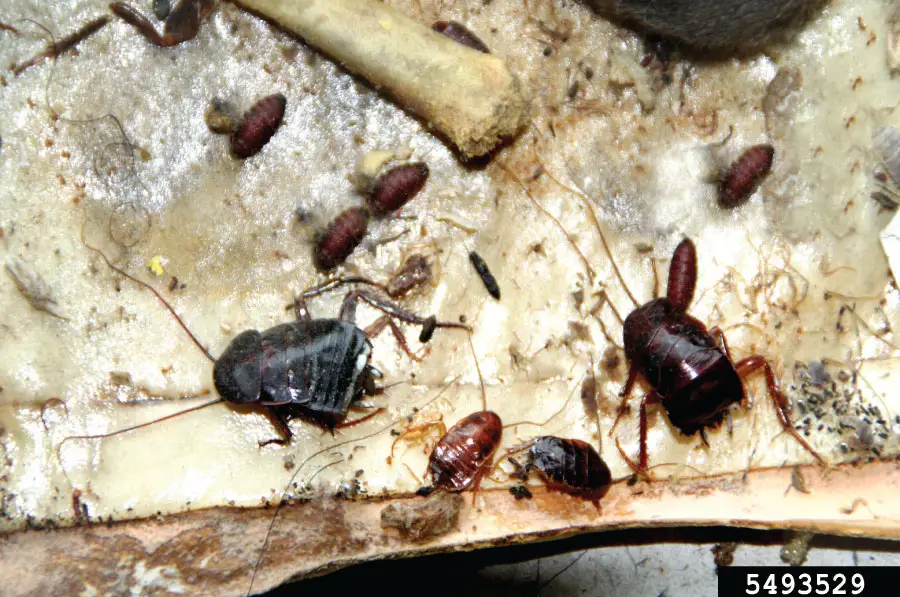
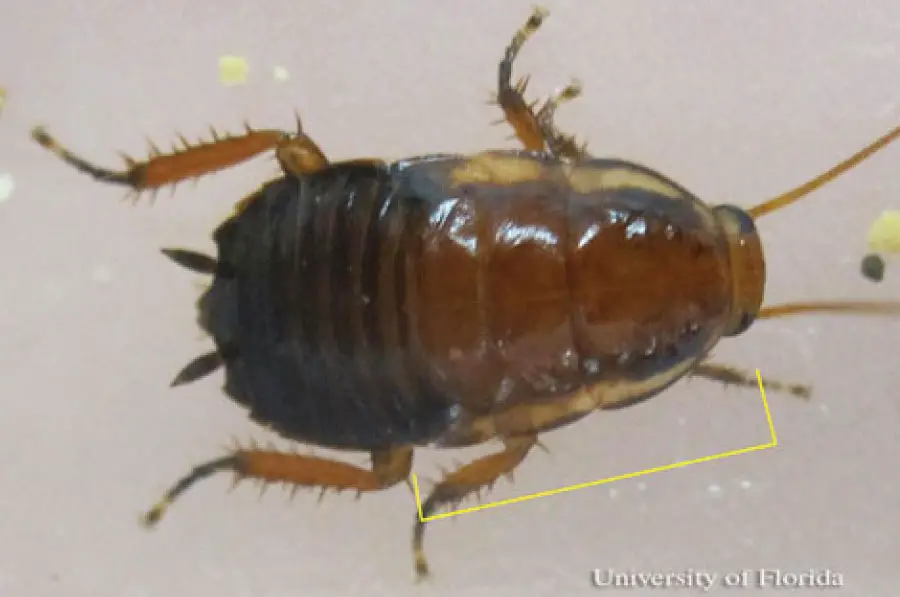
A Cockroach Life Cycle
Reproduction is the cornerstone for the survival of different species, and cockroaches are no stranger to this. The cockroach has an average life span of 2 years. The female roaches produce multiple egg sacks one after another for 8 months.
The roaches preferably mate during the late summer months when it’s mostly humid and hot. A cockroach’s life cycle consists of three distinctive phases Eggs, Nymphs, and Adults. Before the nymph transforms into adults, it has to undergo several stages called metamorphosis.
Stage 1: Eggs
Once the female cockroach mate, she starts producing eggs after 55 days and producing each ootheca a month. In total, one adult female bug produces between six and fourteen egg sacs within its life span.
A cockroach preferably deposits her ootheca (a dark reddish-brown cellulose case containing multiple palmetto eggs) in humid and crevice localities with plenty of food sources. This is important because the survival of the baby roach (Nymphs) is dependent on the environment and the food supply.
A baby cockroach is incapable of surviving harsh weather conditions, mainly high temperature, and dry winds; therefore, the mother considers a suitable location to deposit her eggs. Room temperature is relatively more appropriate & has a productive influence on the life span.
You can learn more about cockroach eggs here.
Stage 2: Nymphs
The suitable temperature and optimal conditions will transform the eggs into nymphs. It takes approximately 48 days for the eggs to hatch.
Once the eggs hatch, the newborn baby cockroaches are called Nymphs, and they will be called nymphs until they reach adulthood. The late nymphal stages commonly have yellow
strip at the thoracic margins, which you can use to identify them.

The nymphs will undergo about 8 to 10 molts, each consisting of about 15 days. After that, their color will change from white of a newborn to brown, tan, or gray and then finally into dark brown or black. The white baby roach is also known as Albino Roach or White Cockroach.
A newborn baby cockroach will have legs but will be lacking wings and other prominent structures. As the nymphs age, the successive molts will shed exoskeleton to accompany the newly expanding large body.
Early instar nymphs are about 2 to 3 mm; middle instar nymphs are about 8 to 9 mm in length. The body of early instars is soft and more elongated, and cylindrical in shape than the late instars. As the baby roach increase in size, the body gets a flatter shape and gets firmer.
One point of concern and interest at the same time is that the nymphs have an excellent organ regenerating property. For instance, the eyes of baby cockroaches get damaged; they will get a new set of eyes within the next molt. This makes it hard to kill a roach.
Once a female roach lays its eggs, it does not take care of it and does not offer any parental care after the eggs hatch, and the baby roaches are utterly on their own to survive what comes their way.
Stage 3: Adults
A series of molting (incremental steps in the lifecycle of a bug) occurs over the next 6 months that transforms nymphs into adults. These are numbered to be roughly 8-10 molts. Once the baby is transformed into an adult bug, it has wings and reproductive capabilities.
Do you know large cockroaches are also known as palmetto bugs?
How to identify a Baby Cockroach
To rule out a possible infestation, it is important to distinguish between baby cockroaches and other insects. This is because the shape of the baby cockroach keeps on changing until they are transformed into an adult. Therefore let’s discuss it briefly.
Egg Hatching
The ootheca is a reddish-brown 8 to 10 mm long sac that contains between 16 to 20 eggs—the eggs hatch in about 48 days. The sac is firm and static, and the eggs have no motion.
Nymphs are grey or white-colored baby roaches. They have dark dotted eyes that are protruded outwards.
From Babies to Adults – Molts Transition (Instar)
Like other insects, nymph formation is further superseded by a phase termed as instar, where molts formation occurs before a baby cockroach reaches adulthood. This transition process from one molt to another can vary from 15 to 18 days on average (depending on the ambient conditions). Their body color changes from white to brown and further dark complexion as the nymph keeps aging accompanied by proper wings developed in adult cockroaches.
Adult Roaches
Once adult roach formation occurs, the body shape will almost remain monotonous throughout the rest of their life except for the increase in weight. The life span of a cockroach is between 365 to 600 days.
Things baby Cockroaches need to survive
What do baby Cockroaches eat?
Baby cockroaches or nymphs will eat anything just like an adult roach. Anything from fresh vegetation to rotting wood. They will even eat other dead roaches or their own shredded molts. But they are fond of fermenting & starchy food. Although, unlike their parents, they don’t have strong jaws to bite on hard materials.
Baby cockroaches start their job as decomposers from an early stage of their life and will start to eat stuff, whatever they find their way. However, they need a lot of food for proper growth and can’t survive long without a consistent supply.
Adult roaches don’t offer any assistance, and the babies have to look for their food themselves. However, the mother roach makes sure to lay the eggs where food is abundant.
Baby Cockroach hiding places
You can find baby roaches that reside in moist and humid places with the availability of eatables in the vicinity. Baby roaches carry along various diseases ranging from certain skin allergies to typhoid and asthma issues. Therefore, eradicating them at this stage shall resolve numerous issues that may later be a nuisance.
They tend to hide near sinkholes, washbasins, kitchen drains, garbage trolleys, and bins. Baby cockroaches will almost vanish when they sense danger in the form of a human appearance at the location or any other motion or sound.
Getting rid of baby Roaches
Let’s discuss all these spets in detail.
Follow these three simple steps to get rid of baby cockroaches in your home.
Step 1: Use a bait
The first step is to use bait to get rid of adult roaches inside your home. Baits are better than sprays as baits will kill the entire colony.
You can get your hand on many baits, but these are my favorite ones. Use each of them according to the instructions on the pack.
– Bengal Roach Killer is a dry spray bait, very easy to apply and use. (How to use guide)
– Advion Cockroach Gel Bait is the most effective gel you can buy.
– Hot Shot Liquid Cockroach Trapper and Killer is the best trap you can get for cockroaches.
– Combat Max 12 Month Roach Killing Bait is the best bait out on the market.
Step 2: Close all openings
The next step is closing all openings in your home; else, it will be impossible to stop an infestation. You need to make sure the baby roaches are not coming from somewhere else.
Use Loctite Foam Sealent (Amazon Link) to close gaps and openings like a pro.
Step 3: Use an IGR
Using an IGR is the last step to ensure the roach nymphs don’t grow into adults. An IGR alters the internal hormones of roaches to molt. This way, the roaches can not become adults and reproduce. Gentrol Growth Regulator (Amazon Link) is the only and the best IGR device for roaches.
It’s very easy to use. Just purge one of them and place it in a hidden place inside your bathroom.
That’s it. Peace.
Additional Read: